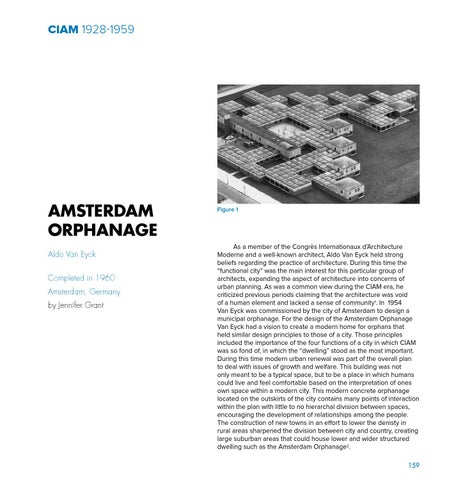CIAM 1928-1959
AMSTERDAM ORPHANAGE Aldo Van Eyck Completed in 1960 Amsterdam, Germany by Jennifer Grant
Figure 1
As a member of the Congrès Internationaux d’Architecture Moderne and a well-known architect, Aldo Van Eyck held strong beliefs regarding the practice of architecture. During this time the “functional city” was the main interest for this particular group of architects, expanding the aspect of architecture into concerns of urban planning. As was a common view during the CIAM era, he criticized previous periods claiming that the architecture was void of a human element and lacked a sense of community1. In 1954 Van Eyck was commissioned by the city of Amsterdam to design a municipal orphanage. For the design of the Amsterdam Orphanage Van Eyck had a vision to create a modern home for orphans that held similar design principles to those of a city. Those principles included the importance of the four functions of a city in which CIAM was so fond of, in which the “dwelling” stood as the most important. During this time modern urban renewal was part of the overall plan to deal with issues of growth and welfare. This building was not only meant to be a typical space, but to be a place in which humans could live and feel comfortable based on the interpretation of ones own space within a modern city. This modern concrete orphanage located on the outskirts of the city contains many points of interaction within the plan with little to no hierarchal division between spaces, encouraging the development of relationships among the people. The construction of new towns in an effort to lower the denisty in rural areas sharpened the division between city and country, creating large suburban areas that could house lower and wider structured dwelling such as the Amsterdam Orphanage2. 159
